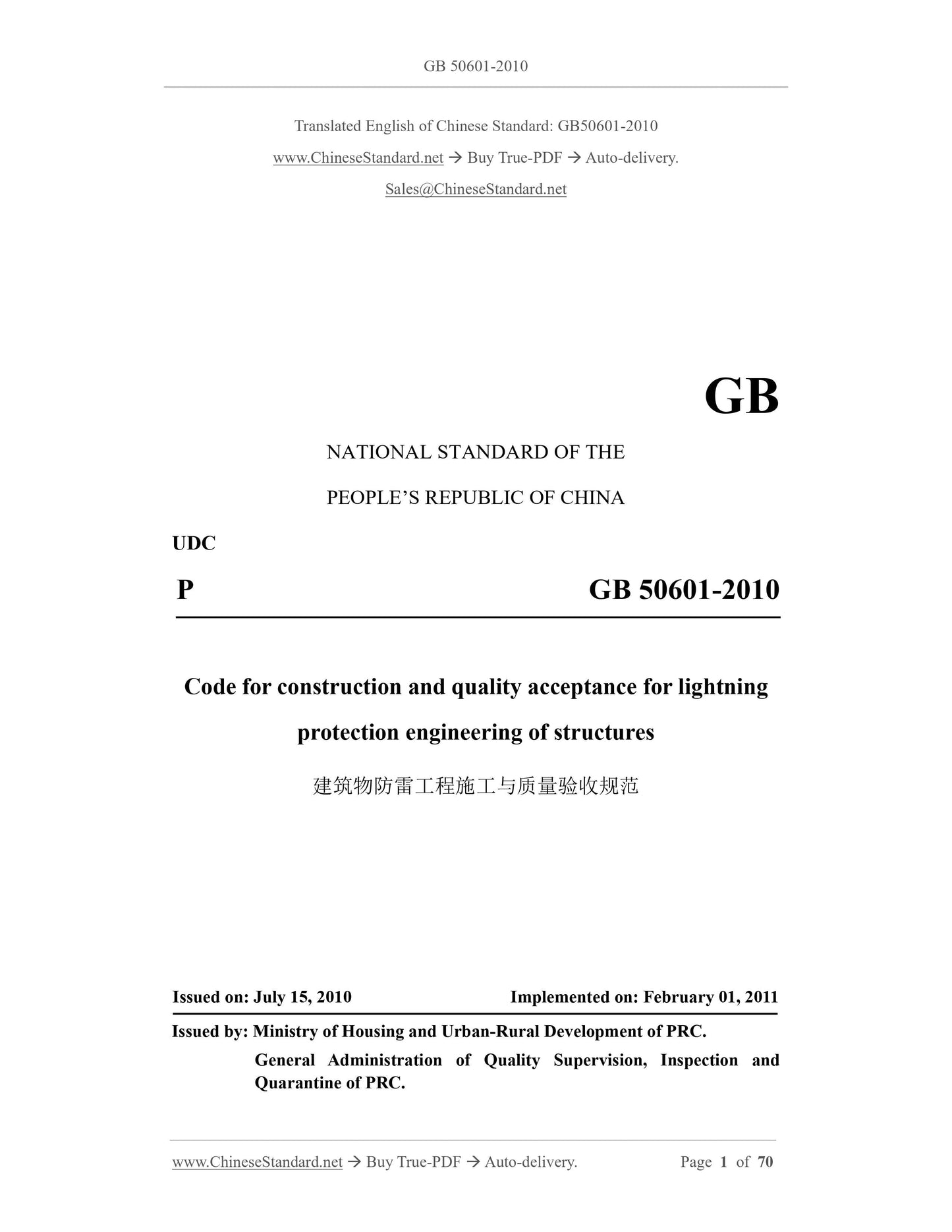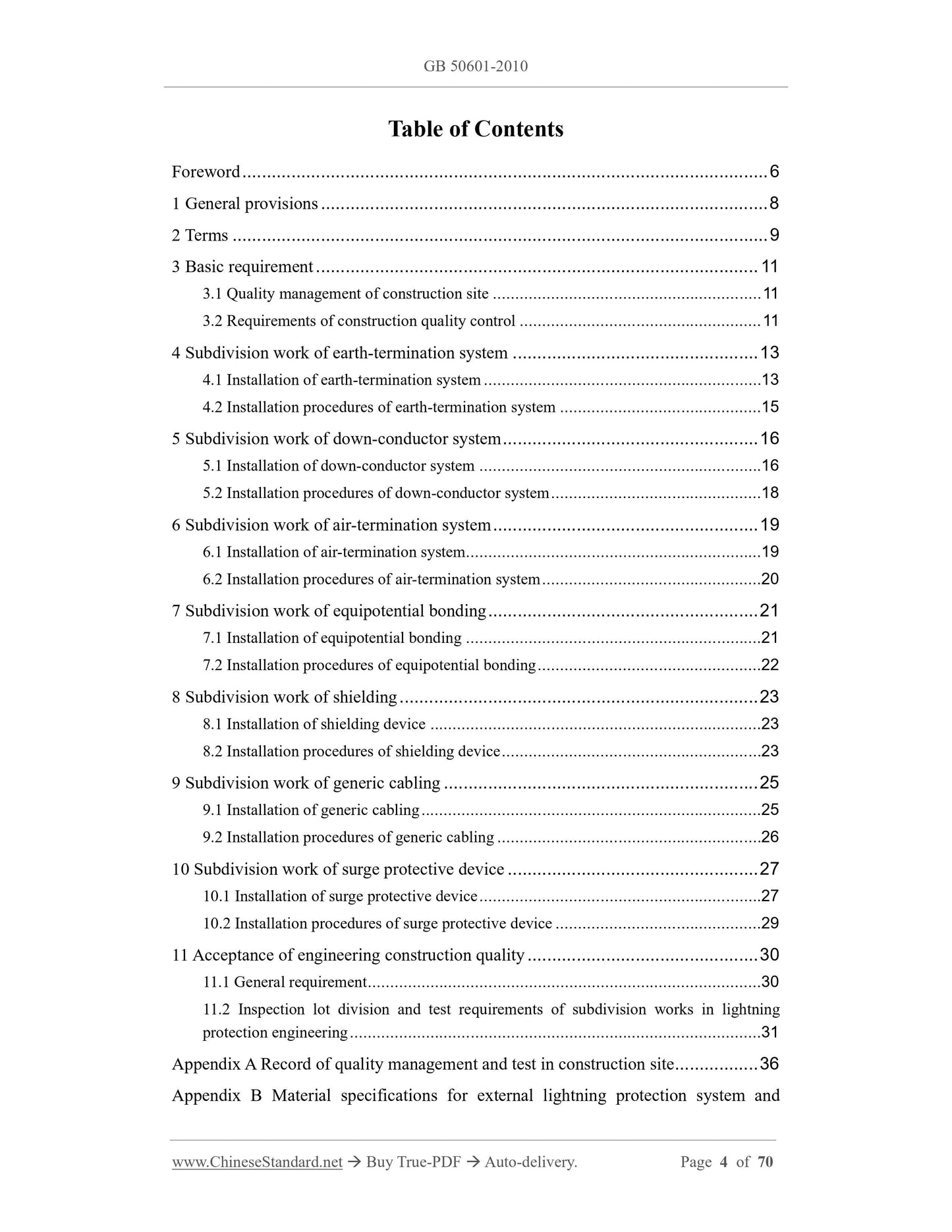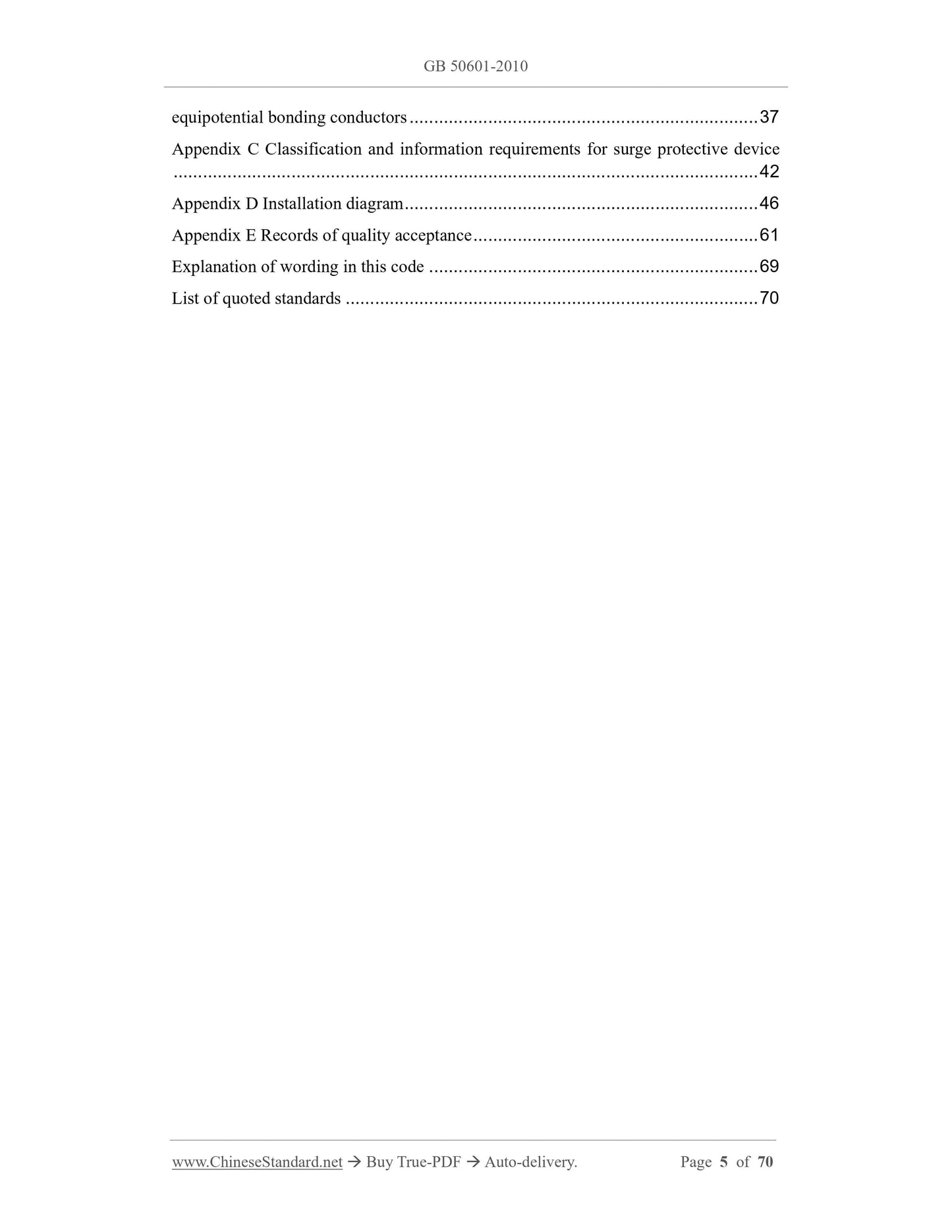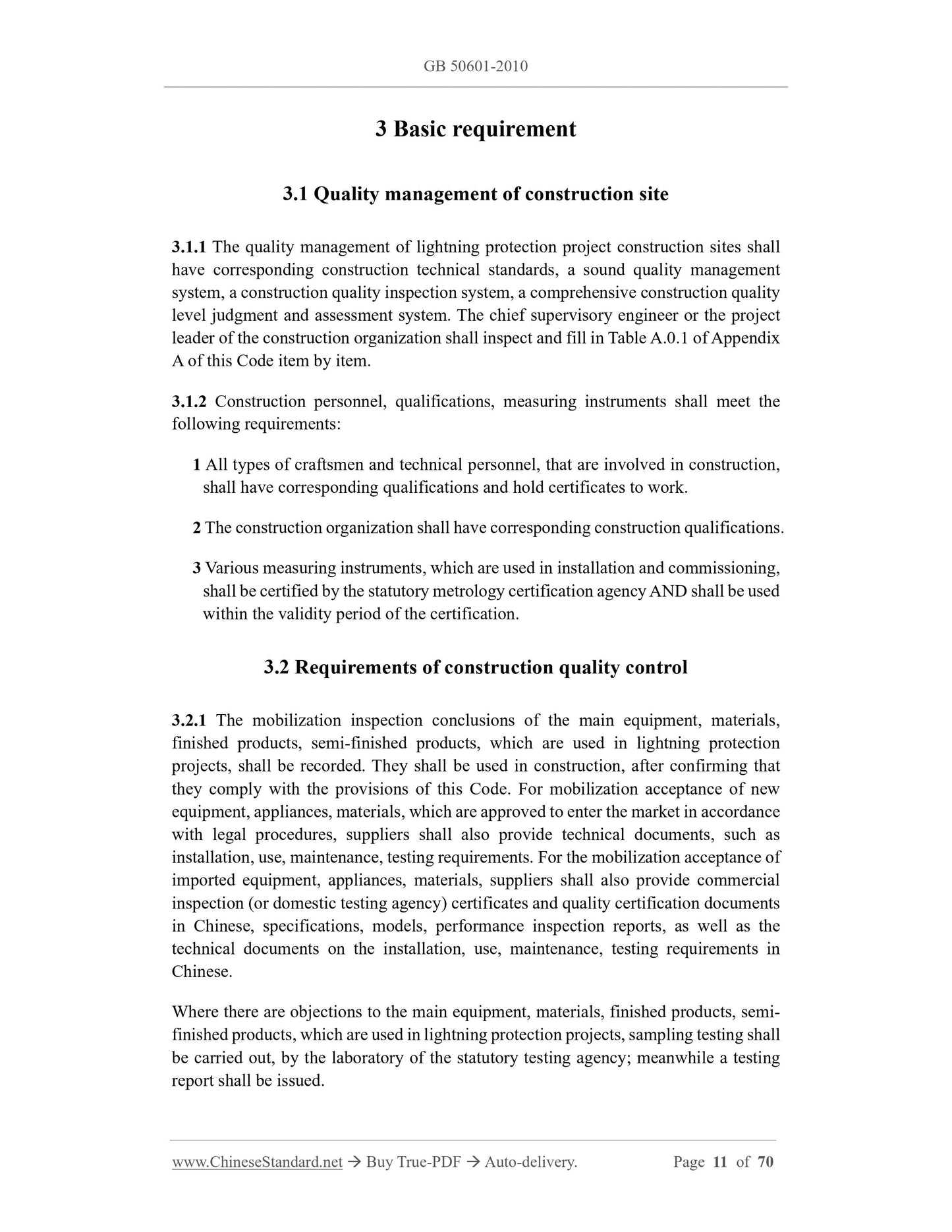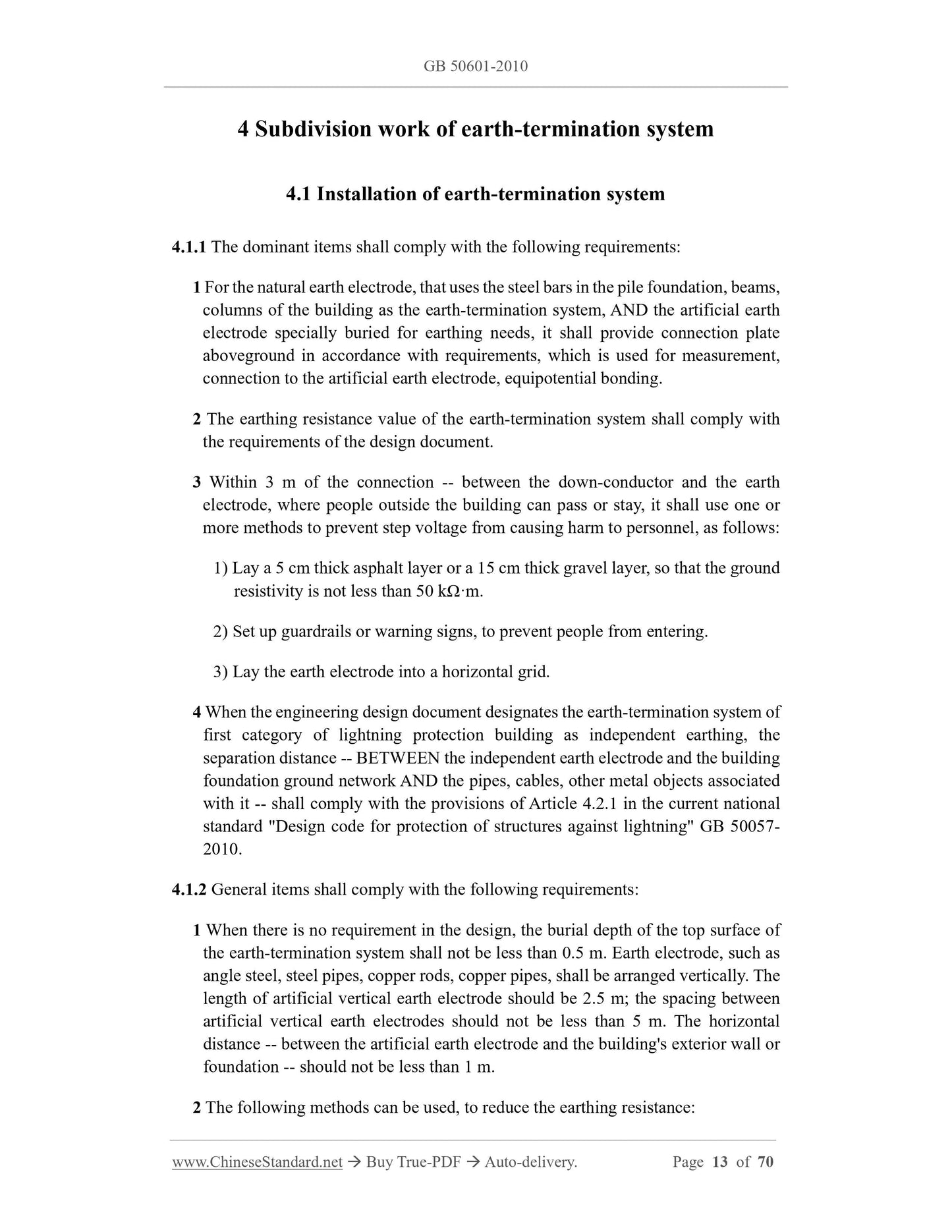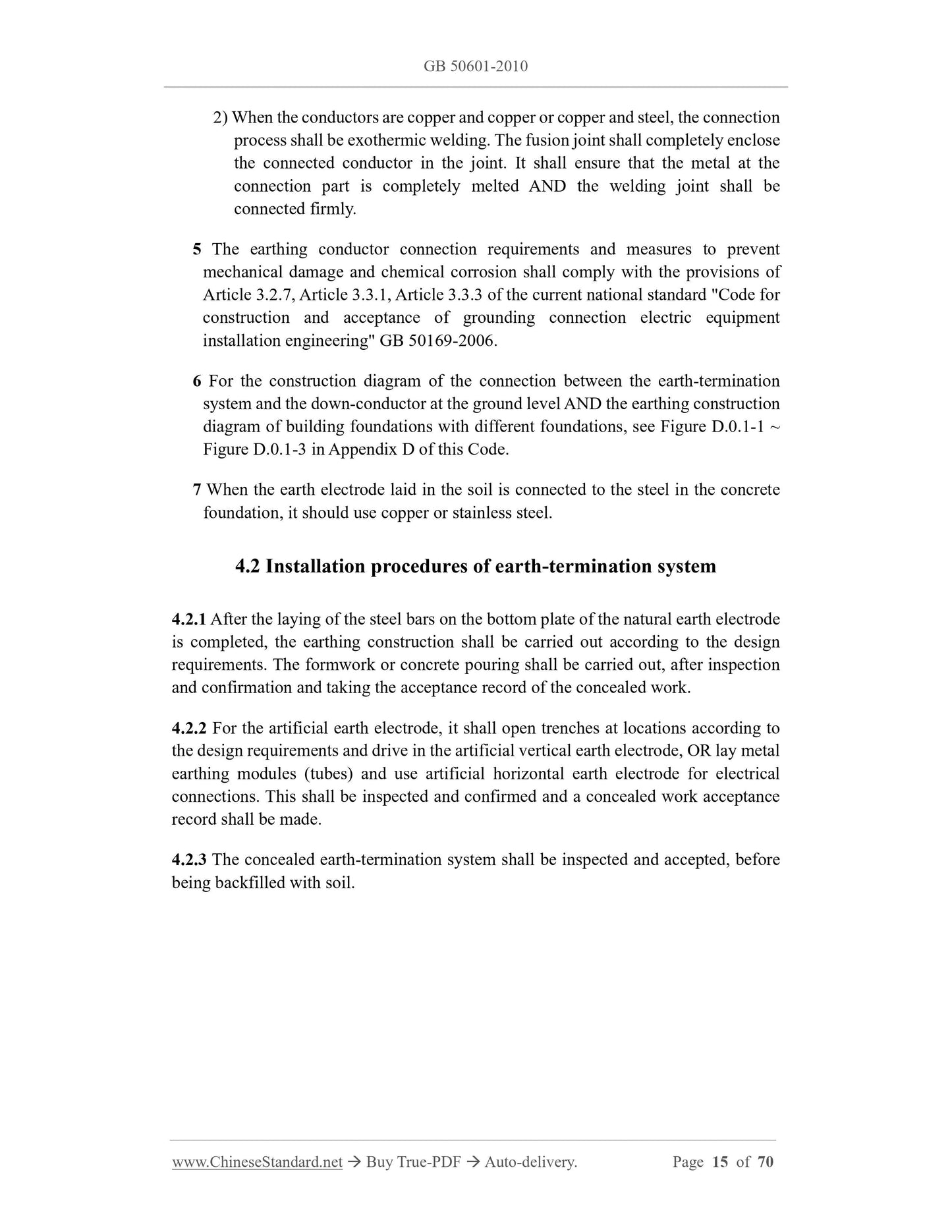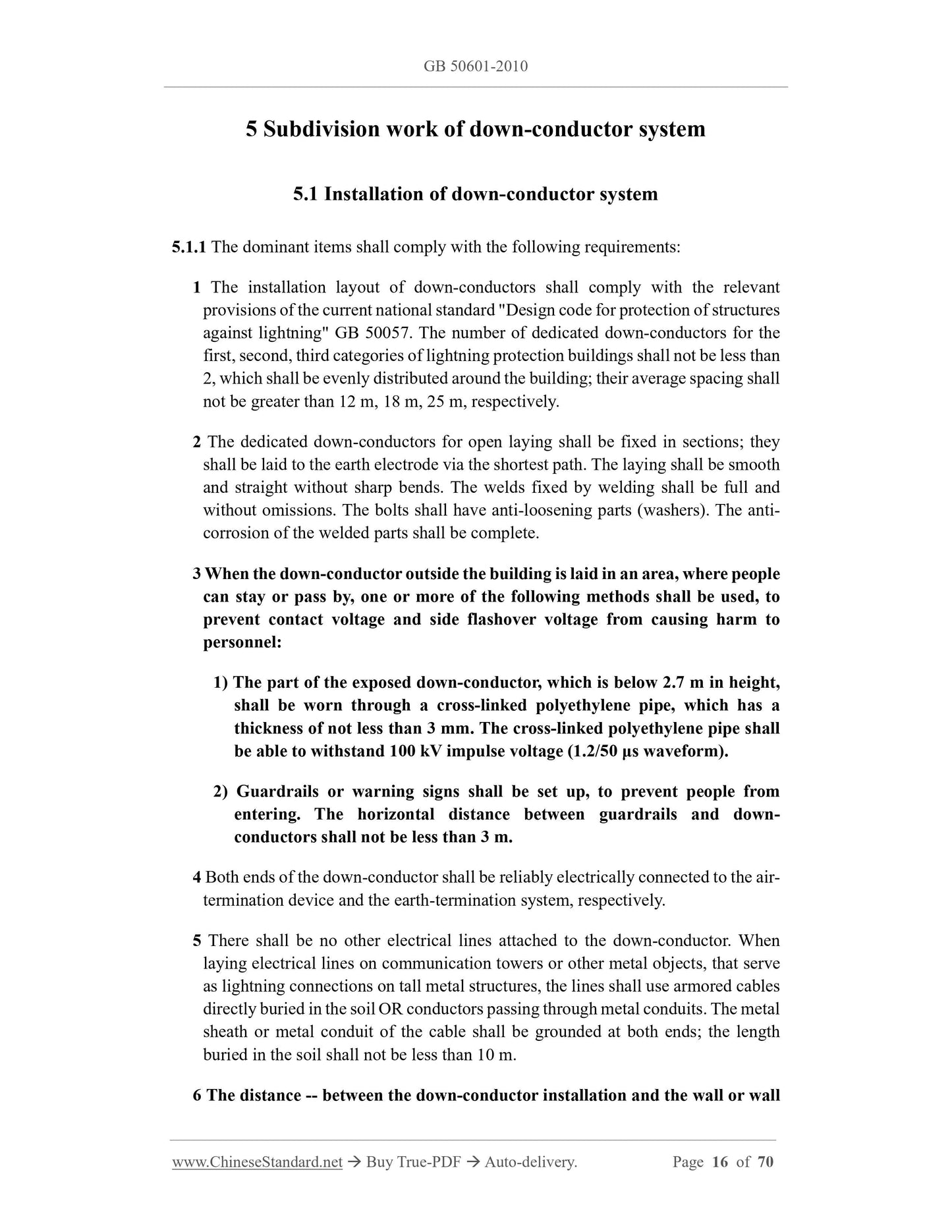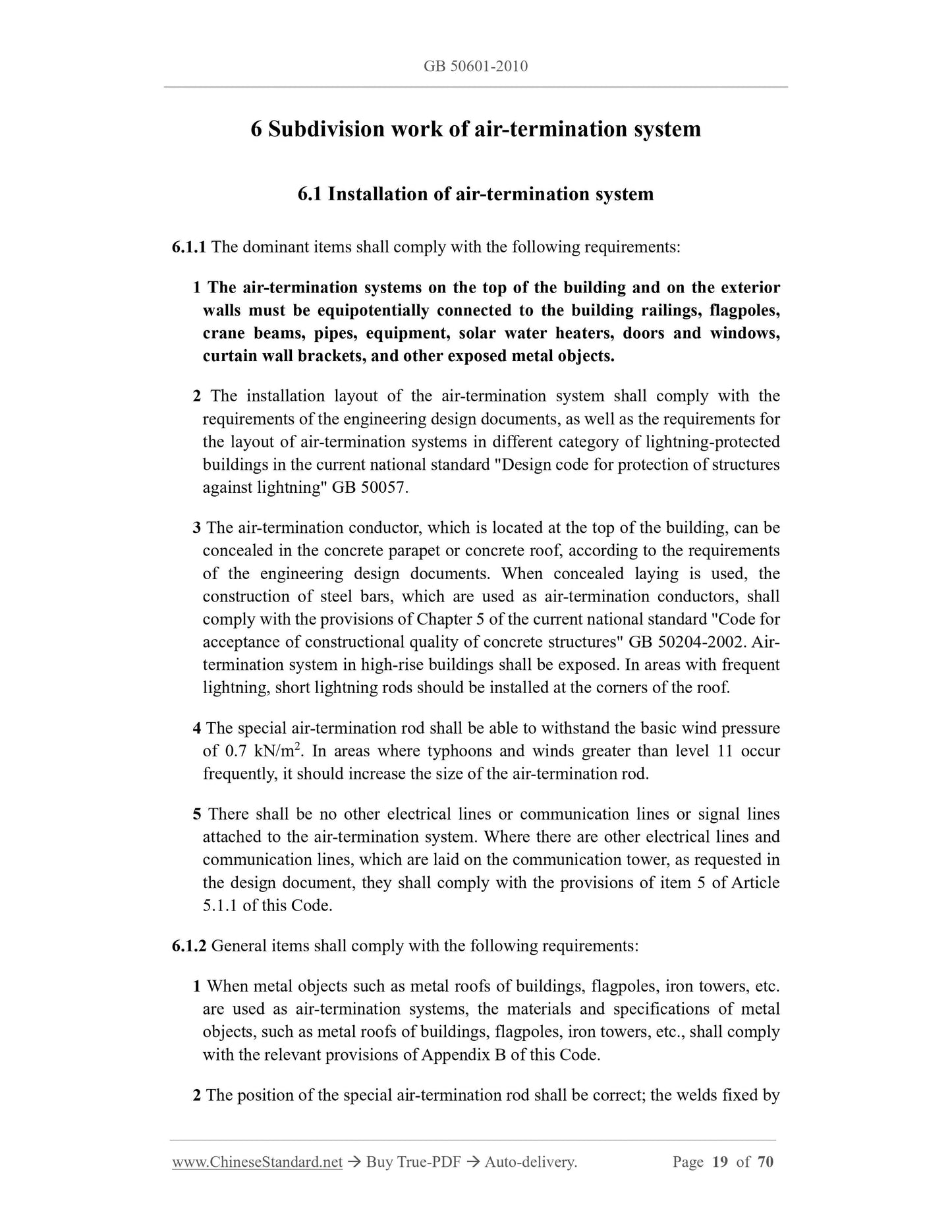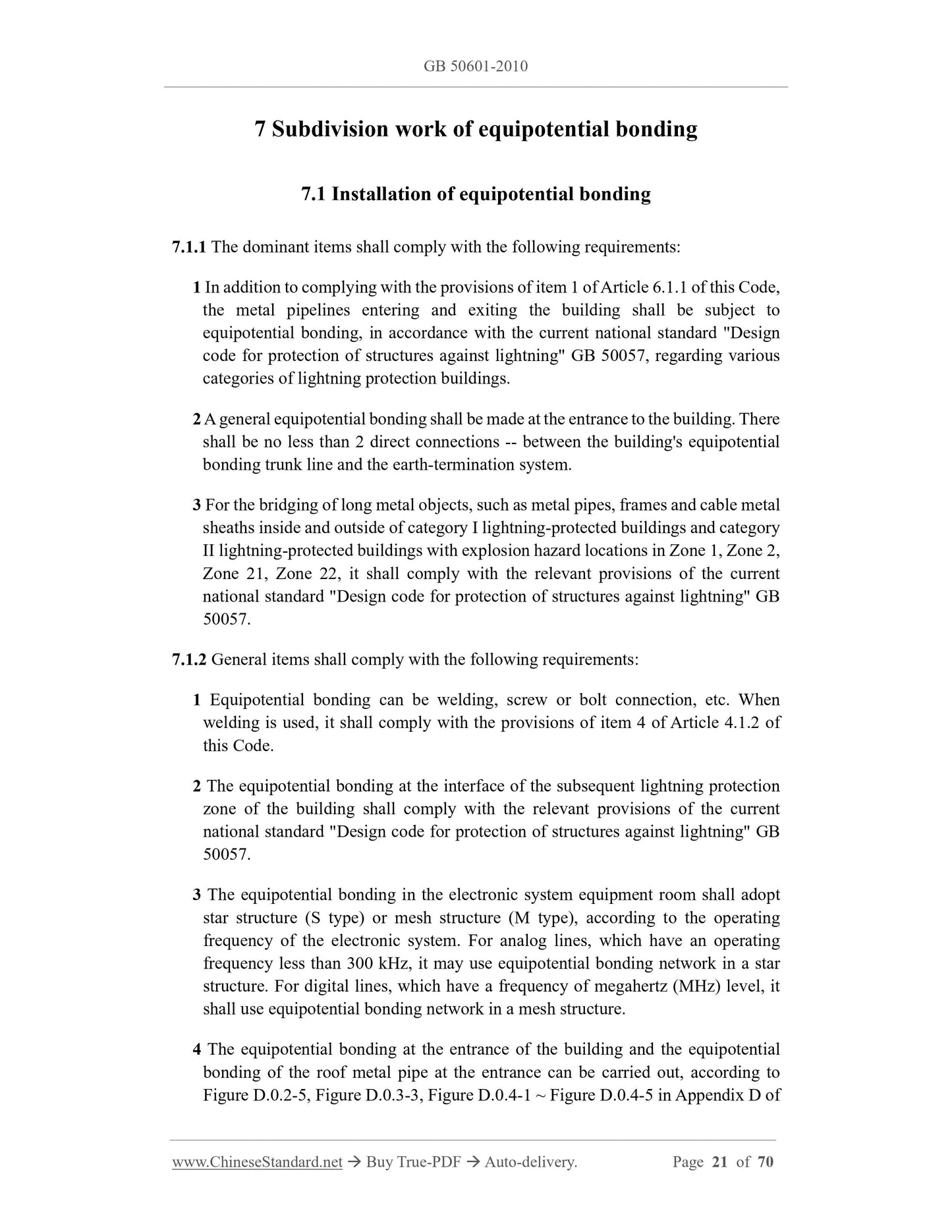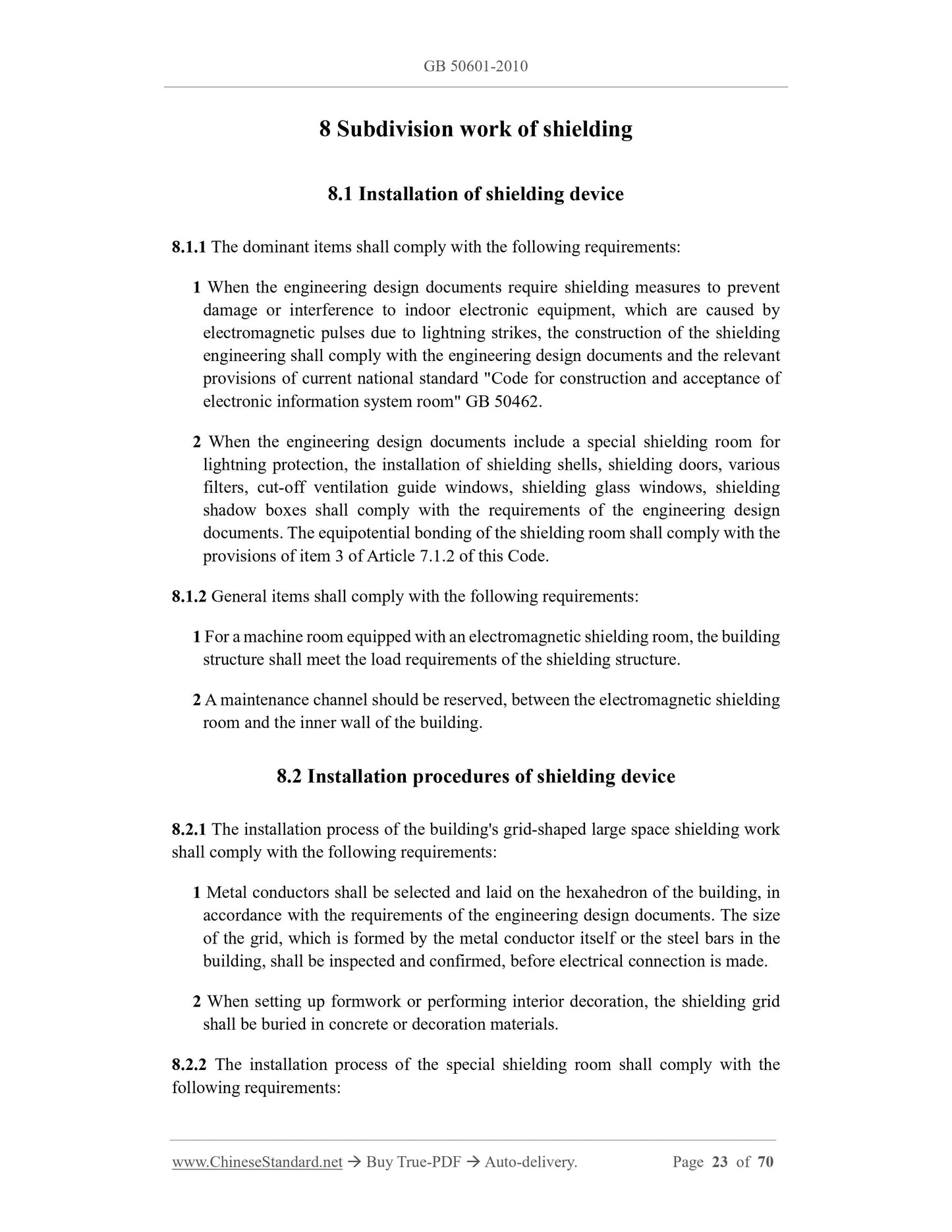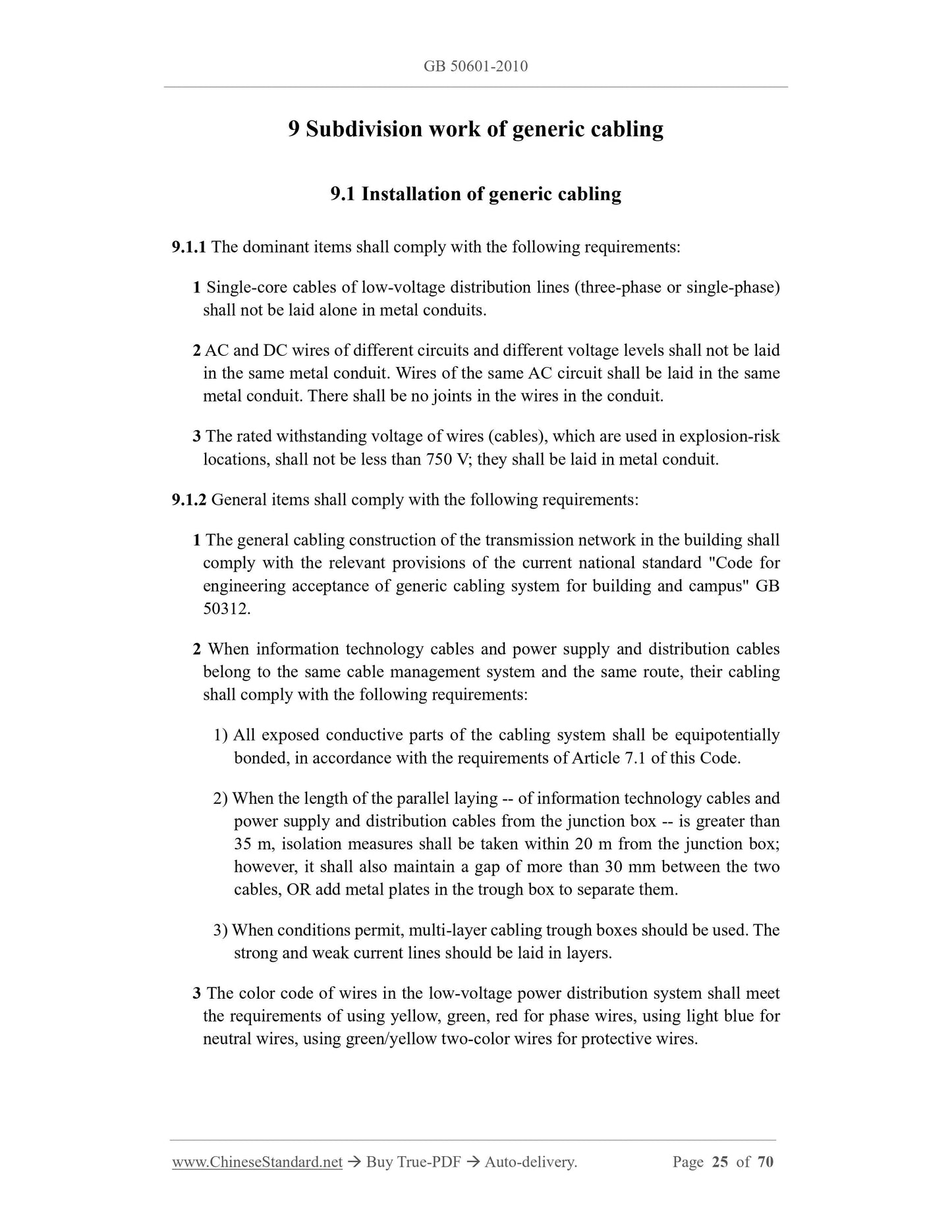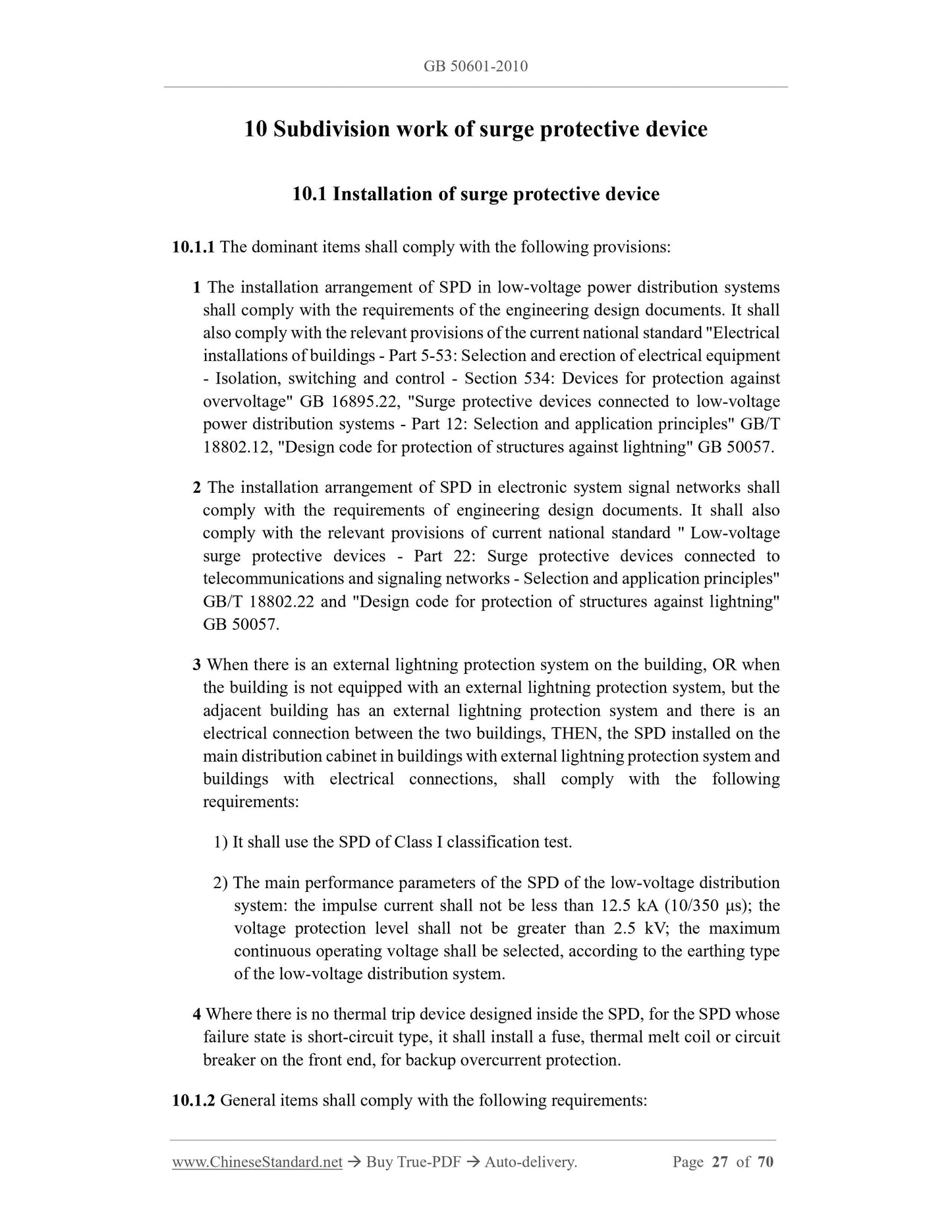1
/
of
12
www.ChineseStandard.us -- Field Test Asia Pte. Ltd.
GB 50601-2010 English PDF
GB 50601-2010 English PDF
Regular price
$1,060.00
Regular price
Sale price
$1,060.00
Unit price
/
per
Shipping calculated at checkout.
Couldn't load pickup availability
GB 50601-2010: Code for construction and quality acceptance for lightning protection engineering of structures
Delivery: 9 seconds. Download (and Email) true-PDF + Invoice.Get Quotation: Click GB 50601-2010 (Self-service in 1-minute)
Newer / historical versions: GB 50601-2010
Preview True-PDF
Scope
1.0.1 This Code is formulated, in order to strengthen the quality supervision andmanagement of lightning protection works in buildings, unify the construction and
quality acceptance of lightning protection works, ensure the quality of projects and the
safe operation of lightning protection systems in buildings.
1.0.2 This Code is applicable to the construction and quality acceptance of lightning
protection works for newly built, renovated, expanded buildings.
1.0.3 In addition to complying with this Code, the construction and quality acceptance
of lightning protection works for buildings shall also comply with the relevant current
national standards.
Basic Data
| Standard ID | GB 50601-2010 (GB50601-2010) |
| Description (Translated English) | Code for construction and quality acceptance for lightning protection engineering of structures |
| Sector / Industry | National Standard |
| Classification of Chinese Standard | P30 |
| Classification of International Standard | 91.120.40 |
| Word Count Estimation | 89,85 |
| Date of Issue | 2010-07-15 |
| Date of Implementation | 2011-02-01 |
| Quoted Standard | GB/T 12190; GB 16895.22; GB/T 18802.12; GB/T 18802.21; GB/T 18802.22; GB/T 21431; GB/T 21714.3; GB 50057; GB 50169; GB 50300; GB 50312; GB 50462; JGJ/T 152; GB 50204 |
| Regulation (derived from) | Bulletin of the Ministry of Housing and Urban No. 664 |
| Issuing agency(ies) | Ministry of Housing and Urban-Rural Development of the People's Republic of China; General Administration of Quality Supervision, Inspection and Quarantine of the People's Republic of China |
| Summary | This Chinese standard applies to new construction, renovation and expansion project of building mine construction and quality acceptance. |
Share
